Quick Bread Machine Pretzel Dough for Perfect Buns or Rolls
Sneak Preview: Create this quick Bread Machine Pretzel Dough in your bread machine, suitable for buns, rolls, or classic ballpark pretzels. These rolls are perfect for a delightful sandwich, or enjoy them solo with mustard. No one will doubt they’re homemade once they savor their incredible freshness!

As an Amazon Associate, I earn from qualifying purchases.
Have you wanted to add trendy soft pretzel rolls or buns to your bread recipe collection? Perhaps you were thinking about making traditional ballpark pretzels. If so, these buns are much easier to shape than traditional pretzels.
If you have made my pretzel recipe before, you may notice that I have tweaked it a bit. I removed the dried milk powder, replaced the butter with oil, and added sugar. I think it’s better and it’s dairy-free. I hope you agree. Enjoy sharing these with your friends.
Three Reasons Why You Will Celebrate This Recipe
- Make traditional pretzels or sandwich buns.
- Eat these alone or with mustard.
- Make these in your bread machine using the DOUGH cycle. You can also make this recipe by hand or with a stand mixer. See the notes in the recipe.
Happy Bakers Speak Up
“These rolls were so good! Fresh out the oven, it was delicious eating it plain with its crispy crust. They were also good after they’d cooled. I will definitely be making these again and trying some of your other bread recipes!”—ALLISON
Ingredients and Substitutions
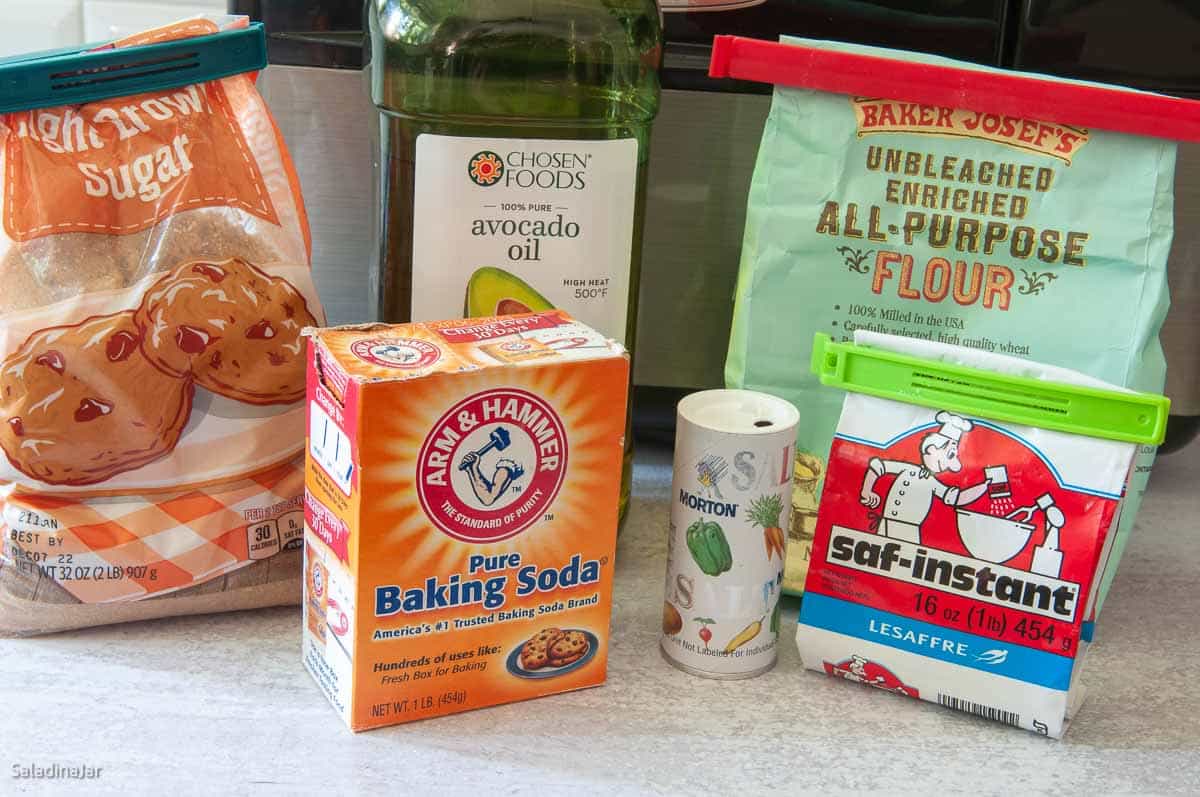
- WATER: I use “de-chlorinated” water in my bread recipes. Draw water from your faucet and let it sit uncovered on the counter for 24 hours so the chlorine will evaporate. Alternatively, use spring water. However, unless your water is very hard, you can probably get away with using plain old tap water. I did it for years.
- The water does not need to be warmed. The friction of the bread machine paddles provides more than enough heat to bring all ingredients up to the right temperature. The preheat phase many bread machines feature is also unnecessary for this recipe.
- VEGETABLE OIL: I like avocado oil, but vegetable oil works fine, too.
- SALT: Use table salt or sea salt in the recipe. Sprinkle coarse salt (Kosher or otherwise) on the rolls before you bake them.
- SUGAR: Brown sugar, granulated white sugar, or no sugar are acceptable options in this recipe.
- UNBLEACHED FLOUR: I tested the recipe with unbleached all-purpose flour. Bleached all-purpose flour would also work. If you want a chewier product, use bread flour. With this recipe, bread flour would probably be my first choice if you want to make traditional ballpark pretzels.
- YEAST: If you’ve baked with me before, you know I use instant yeast (AKA bread machine yeast, or rapid-rise yeast) in all of my bread machine recipes. See the recipe notes if you only have active dry yeast available.
- BAKING SODA: So far, you can see that the ingredients listed are pretty standard for yeast bread dough. But if you want dark brown and chewy pretzels, you’ll need an “alkaline or high pH bath (that) fosters Maillard browning, thus producing the shiny dark brown surface. Additionally, it produces the unique flavor notes, characteristic of pretzels.” —Bakerpedia
- Do this at home by adding baking soda and salt to hot water and giving each raw pretzel roll a little dip in a simmering baking soda bath.
How To Make Bread Machine Pretzel Dough
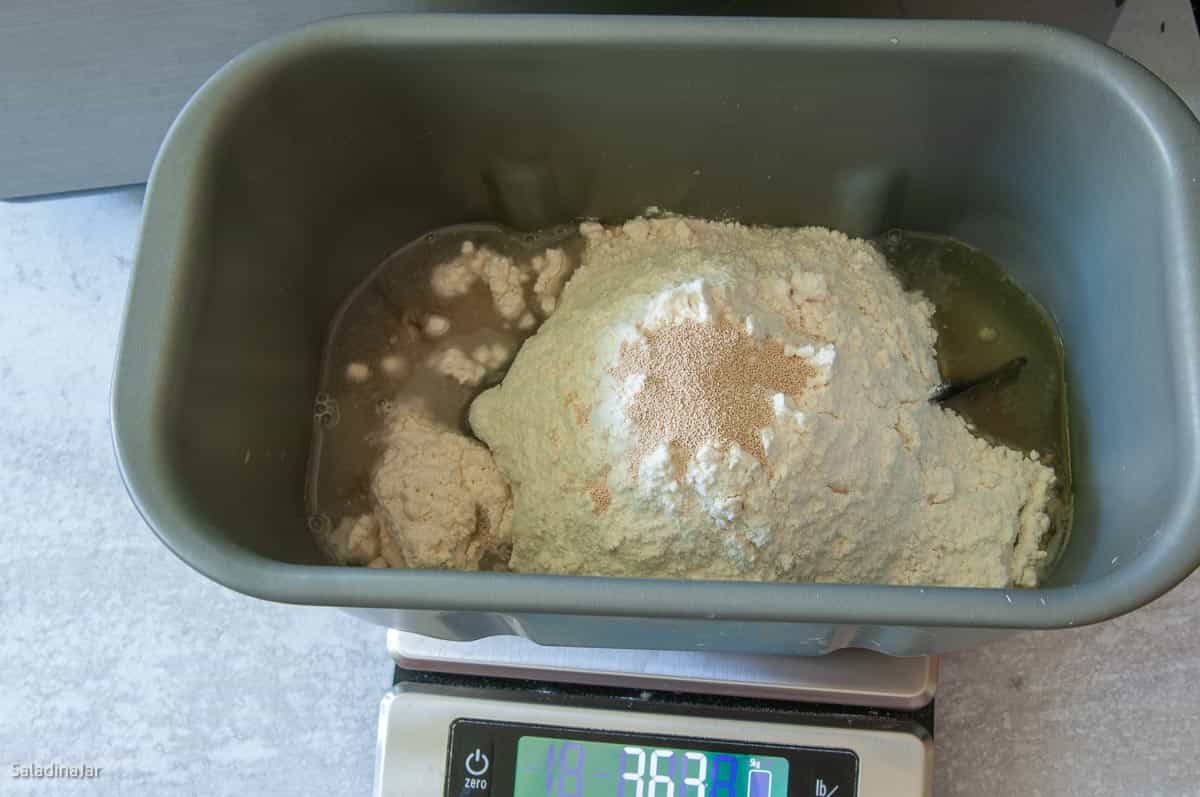
If possible, use a digital scale to measure, especially for the flour.
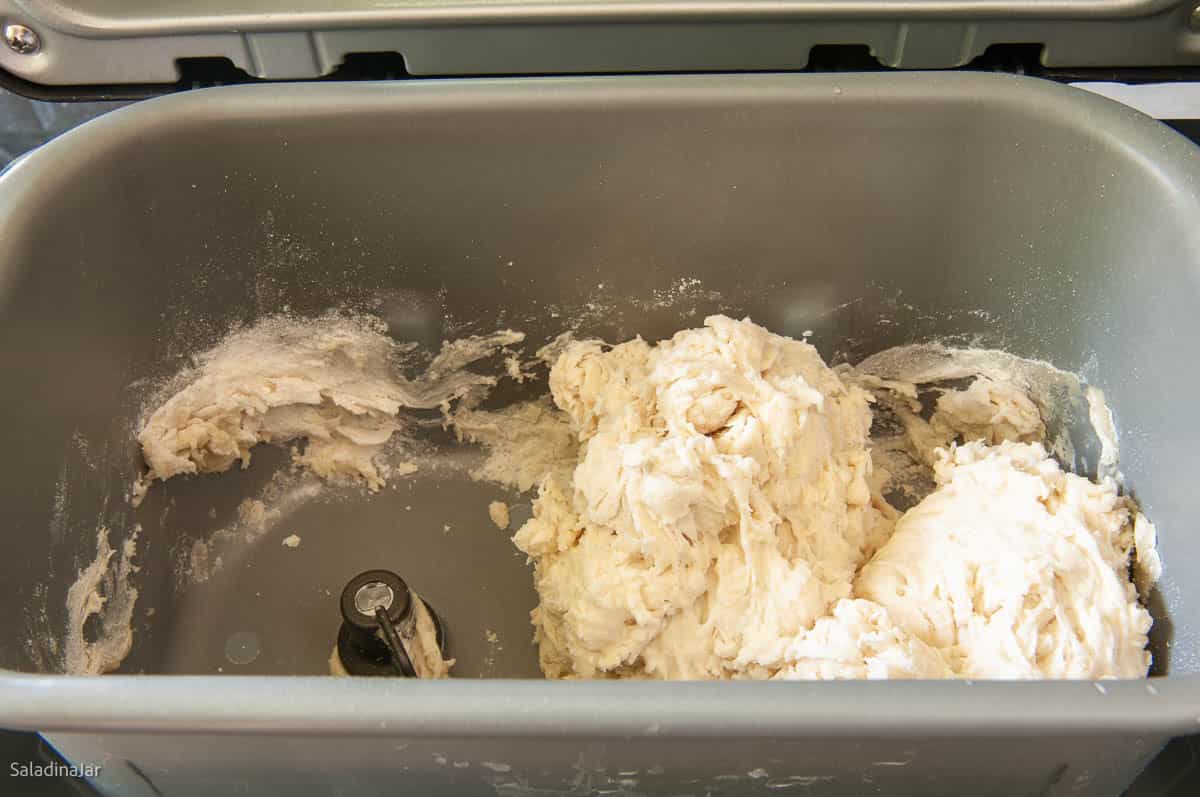
Watch for the dough to start clumping into a mass in the first minute or two. If it looks like pancake batter or dry oatmeal, there may have been a mistake in measuring. Add more flour if it is too wet or more water if the mixture is too dry until the dough clumps.
Recheck the consistency of the dough again 15 minutes into the DOUGH cycle. If your dough is too wet, add flour one tablespoon at a time. The dough should stick to the side, then pull away cleanly. Conversely, if the dough is too dry, add one tablespoon of liquid at a time until the dough looks just right. Learn more about this surprising secret to success with a bread machine here.
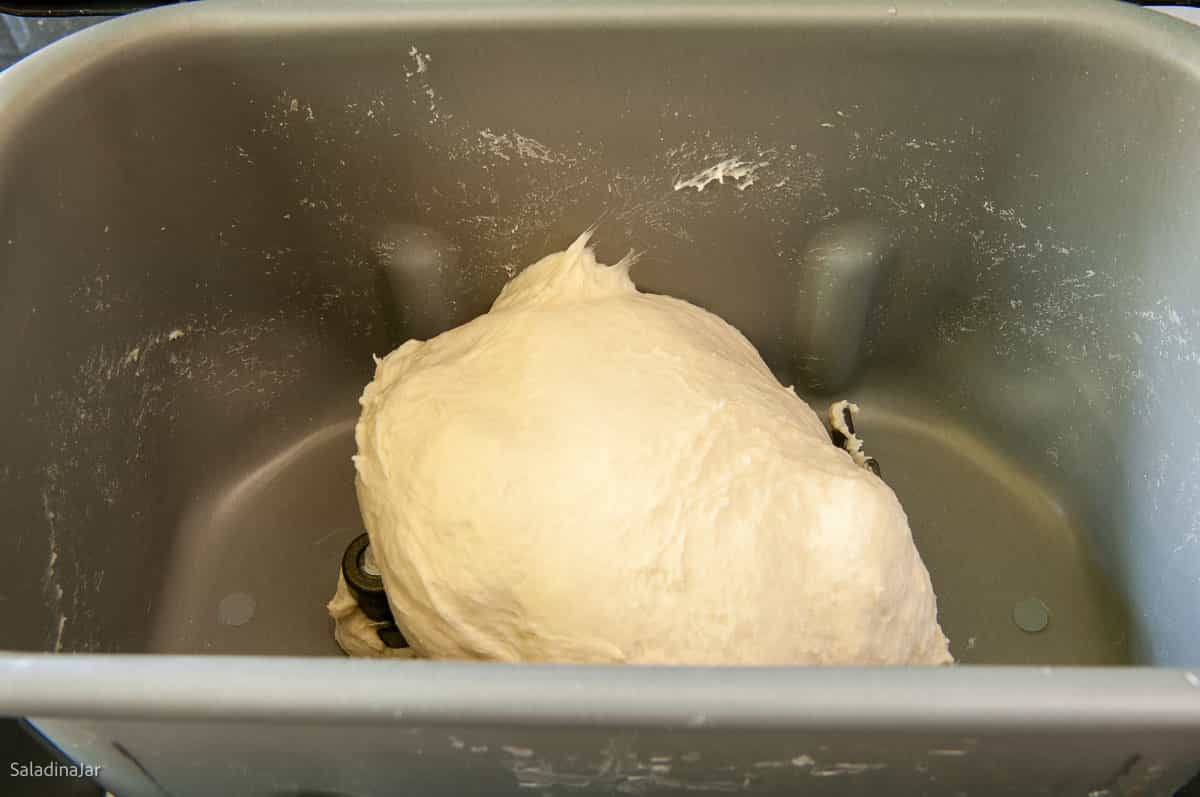
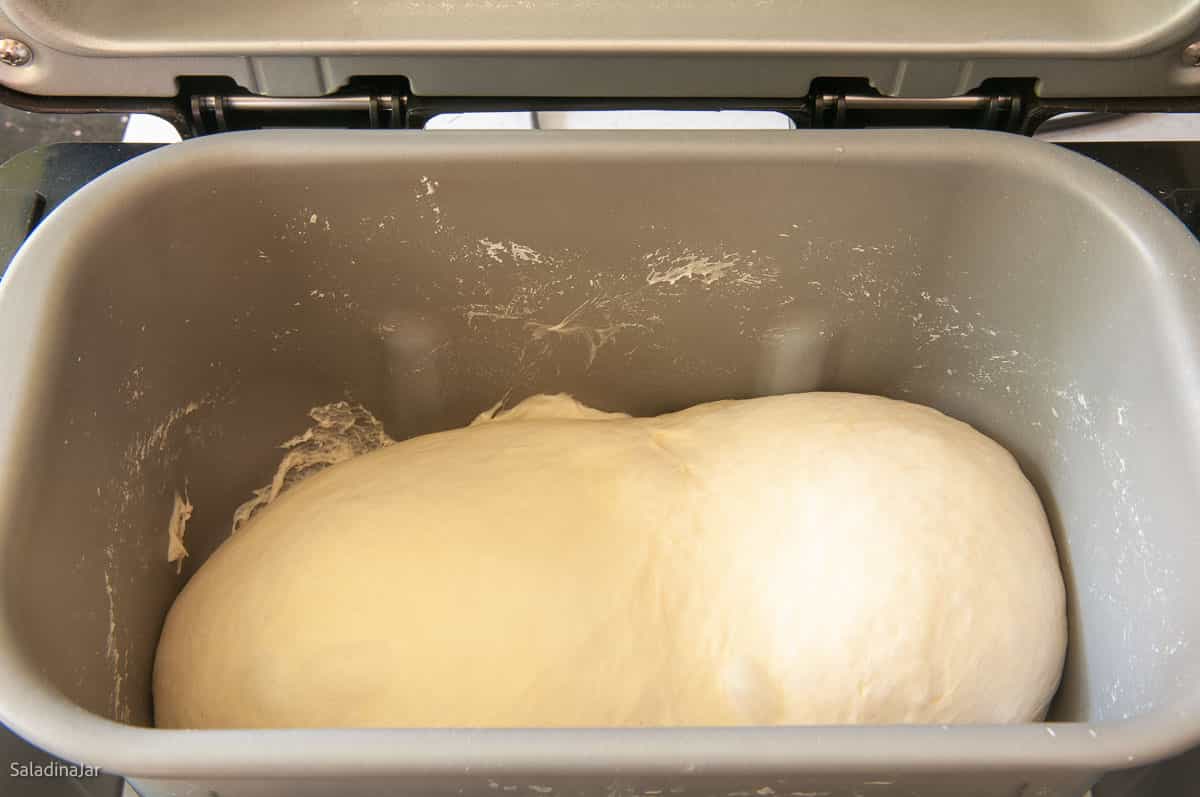

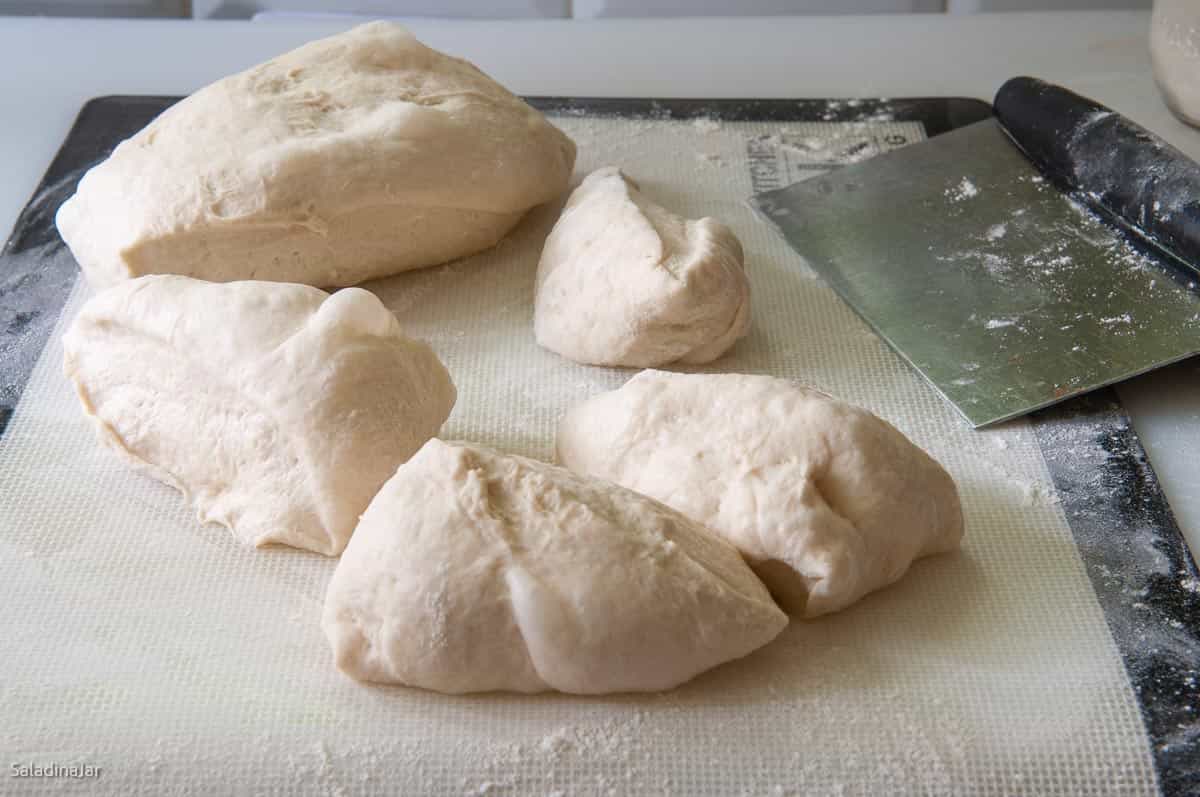
How To Form Pretzel Rolls or Buns
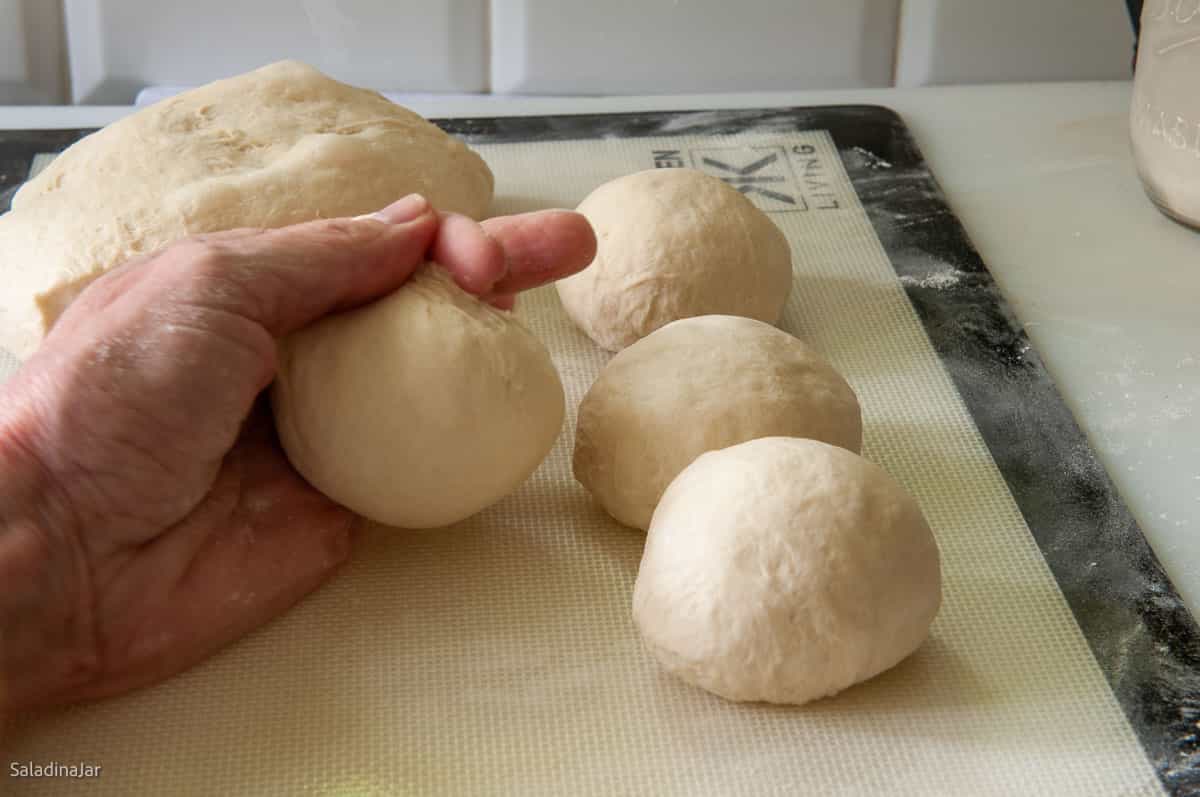

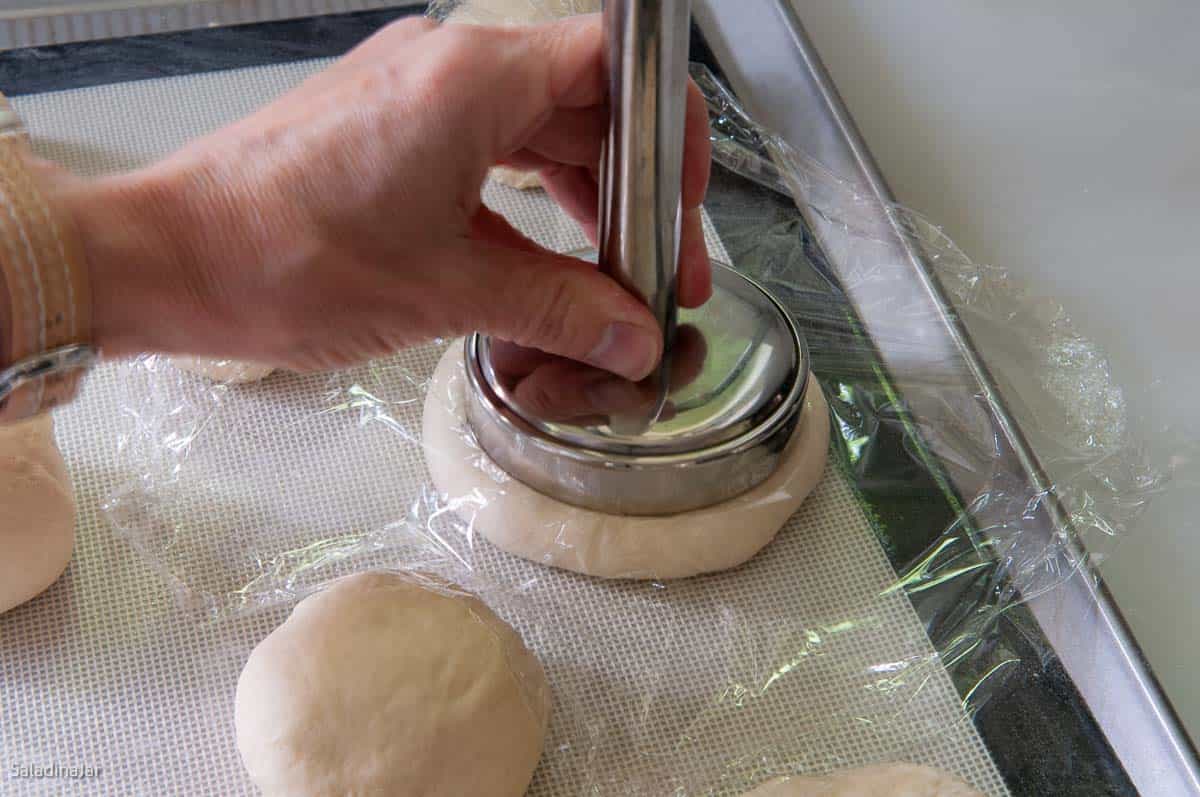
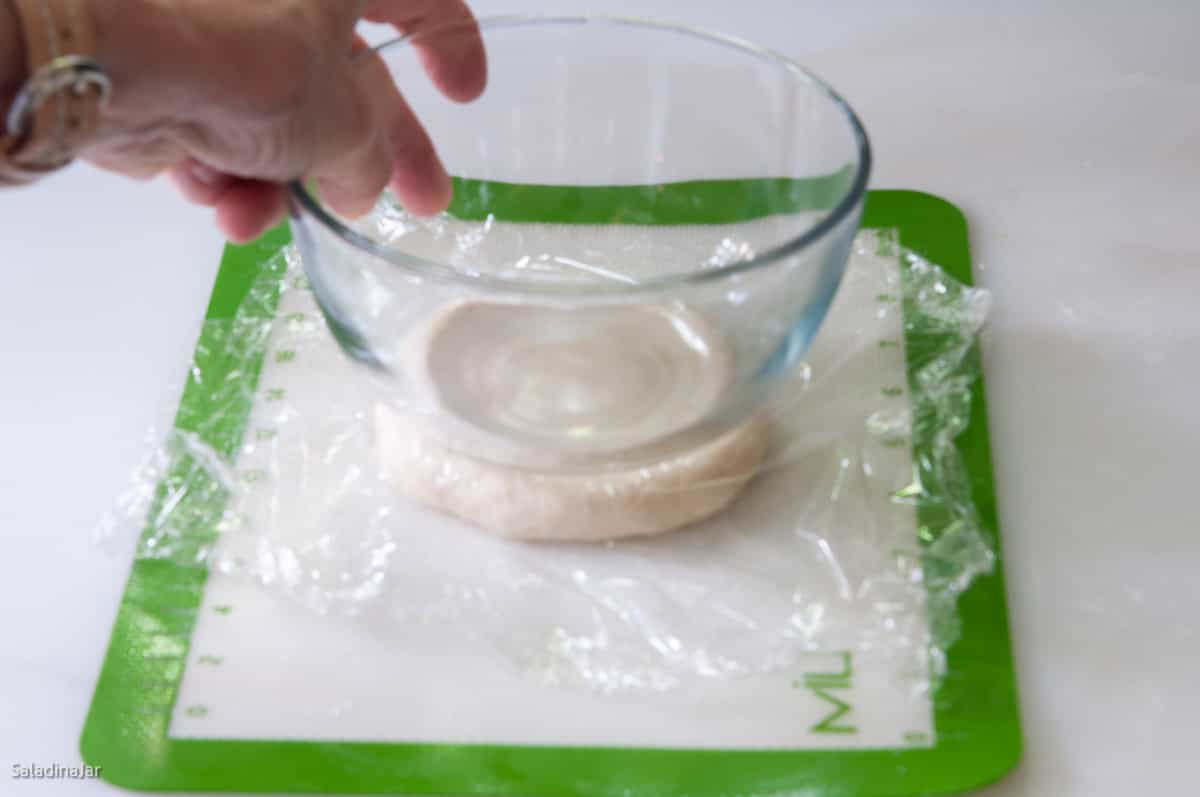
Now that you know how to shape burger buns, take a look at some of my other recipes for buns: Bread Machine Whole Wheat Rolls: Good for Slider Buns, Too, Perfected Potato Hamburger Buns (Mixed in a Bread Machine), and Impressive 7-Grain Bread Recipe for Burger Buns (Bread Machine).
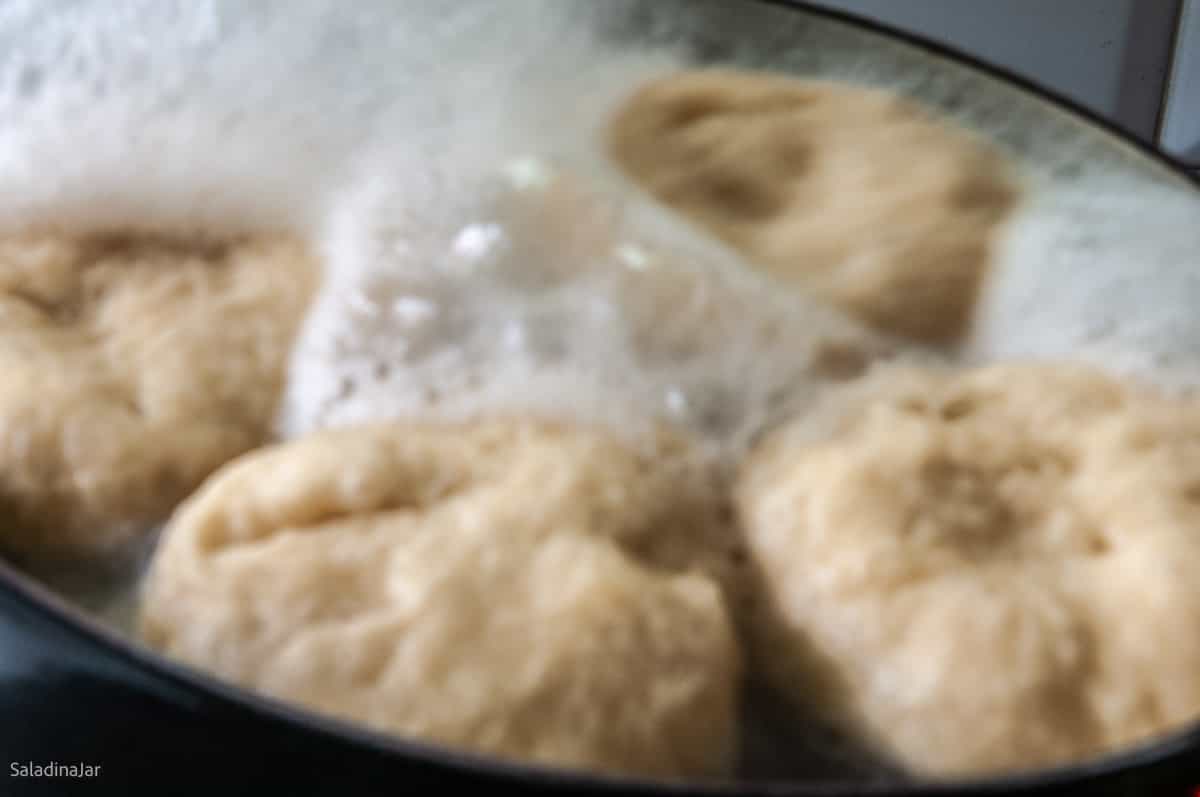
Drop the pretzel rolls into the simmering baking soda water with a slotted spoon. After 30 seconds, flip the rolls to the other side and cook for another 30 seconds. Remove the rolls to a prepared baking sheet (covered with parchment paper or a silicone mat). They will look wrinkled.
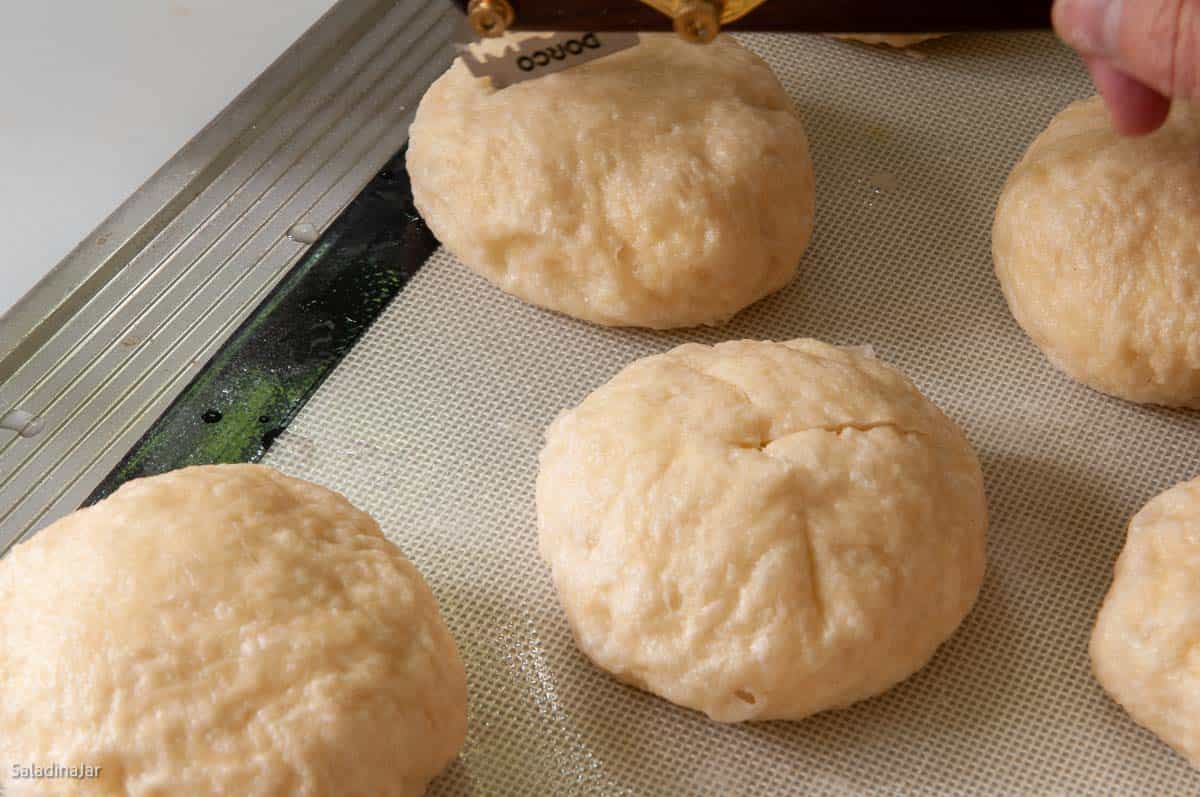
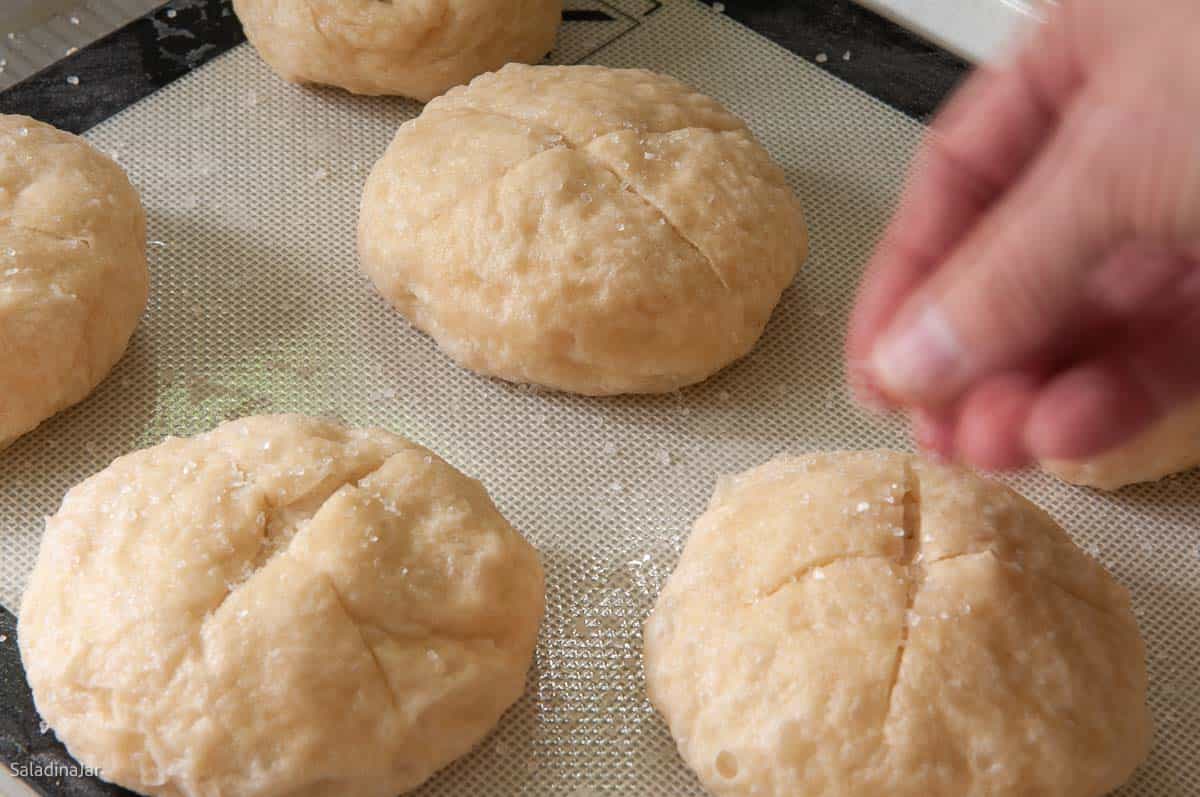
Bake for 15-20 minutes at 400˚F (200˚C). The internal temperature should reach 195-200˚F (88-90˚C).
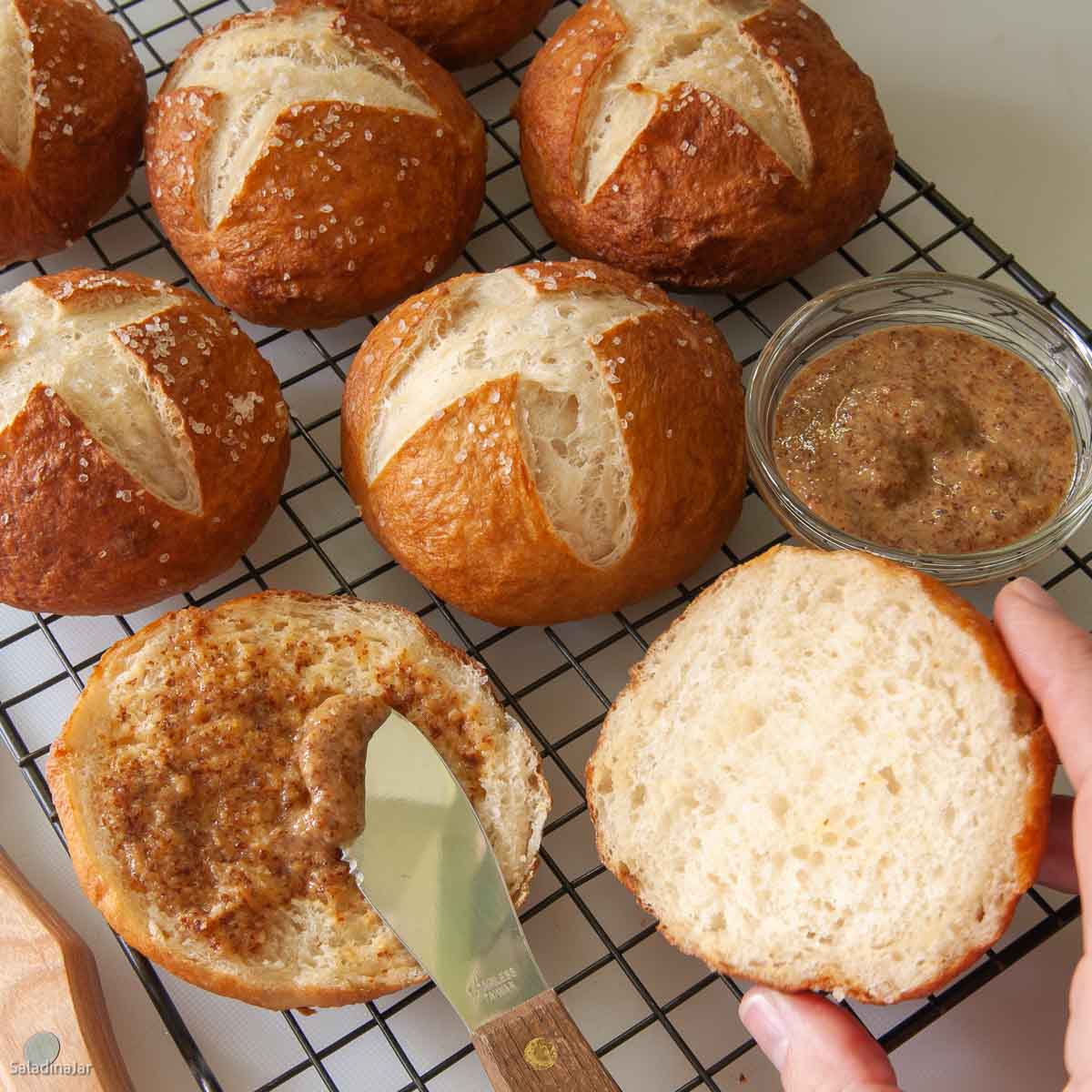
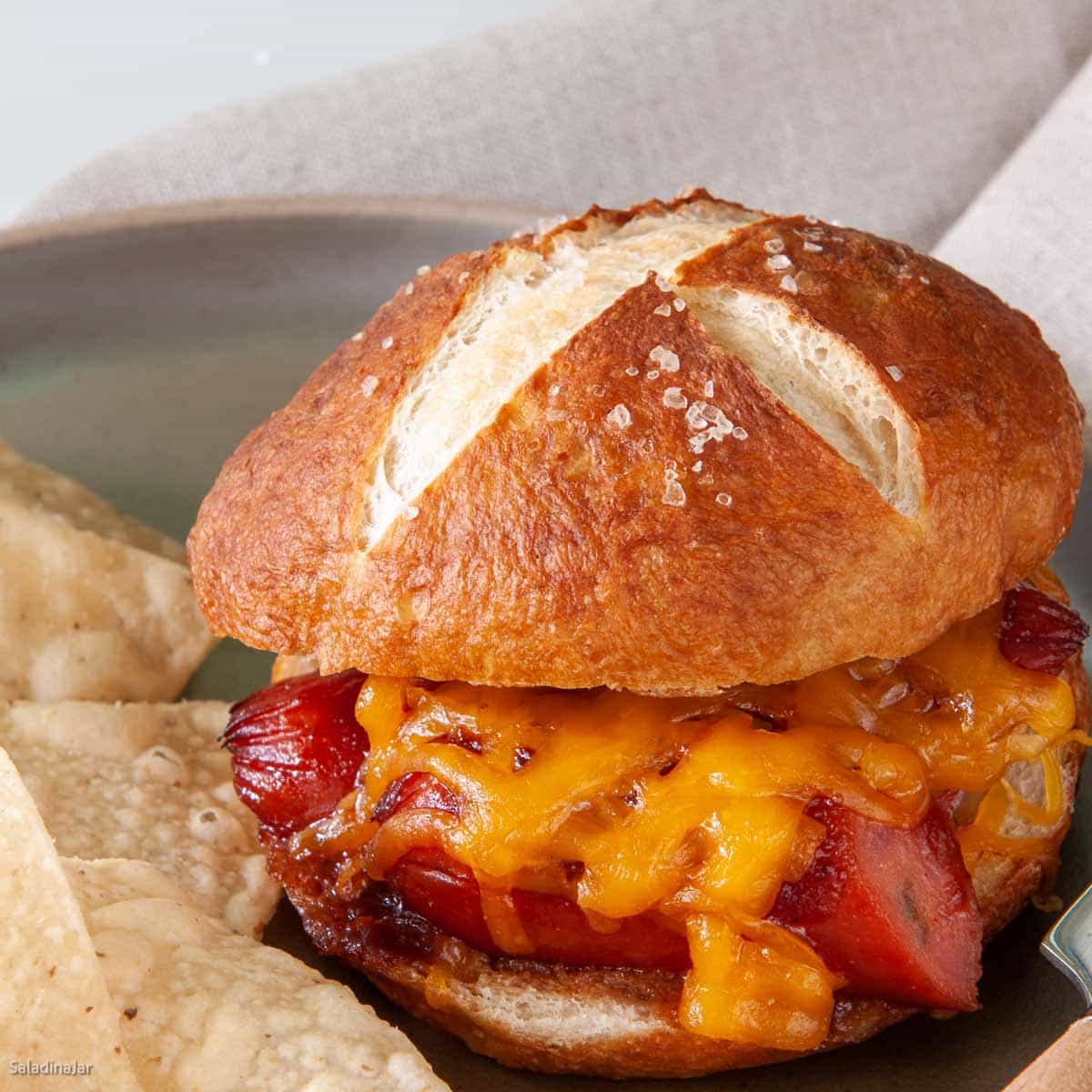
FAQ about Bread Machine Pretzel Dough
Before placing the buns in boiling water, flatten each bun with your hand, a meat flattener, or a small clear glass plate or bowl. Throw plastic wrap over the dough ball so it won’t stick. Use some muscle for this process. These rolls have amazing bounce-back capabilities.
Yes. Twisted pretzels have more surface area with the trademark salty and dark golden brown surface if you enjoy that. Check YouTube for a demonstration of how to make the pretzel shape. Twisted pretzels are not my favorite, so I haven’t perfected the technique yet.
Yes. Use it for pizza if you like, although I’m partial to my tried-and-true pizza dough recipe made with a bread machine.
Nothing really. It’s basic bread dough. What makes pretzel dough unique is the baking soda and salt bath after shaping the dough into balls.
Yes. When you pull it out of your bread machine after the DOUGH cycle finishes, put the dough into a large bowl or storage container, cover it, and refrigerate. The next day, remove the dough from the fridge and allow it to warm for about an hour. Portion the dough and follow the directions for shaping.
Homemade bread never lasts as long as commercially made bread because there are no preservatives. Think of these pretzels the same way as donuts—best when hot out of the oven and the day you bake them, but better toasted the next day.
Pretzel dough only needs one (or two) rises in the bread machine as part of the DOUGH cycle. They will need a relaxation period of about 15 minutes after you shape the dough into balls and before flattening them.
If you are having trouble shaping because the dough is too bouncy, cover the dough with a towel and walk away for a few minutes while the dough relaxes. (This is a general principle when handling dough for any yeast bread.)
Parting thoughts: For a fun project with your kids or grandkids, consider shaping this dough into classic ballpark pretzels. I haven’t included shaping tutorials here since there are many available on YouTube – watching someone do it is likely the easiest way to learn. Personally, I find them a bit too much trouble, but I’d make them with my grandkids.
Recipe Help at Your Fingertips: For questions or suggestions, email Paula at saladinajar.com. If you need help, I’m happy to troubleshoot via email (faster than leaving a comment). Attach pictures and as many details as possible for the best advice.

Quick Bread Machine Pretzel Dough for Perfect Buns or Rolls
Rate this recipe
(5 stars if you loved it)
Video
Ingredients
Dough
- 1 cup + 1 tablespoon (241 g) water
- 1 tablespoon packed light brown sugar
- 1 tablespoon vegetable oil
- ½ teaspoon salt table or sea salt
- 3 cups (360 g) unbleached all-purpose flour
- 1¼ teaspoon instant yeast
Water Bath
- 2 quarts (1892 ml) water
- ¼ cup (30 g) baking soda
- 1 tablespoon salt
- coarse salt for sprinkling on top
Instructions
DOUGH
- Add 1 cup + 1 tablespoon (241 g) water, 1 tablespoon packed light brown sugar, 1 tablespoon vegetable oil, ½ teaspoon salt, 3 cups (360 g) unbleached all-purpose flour, and 1¼ teaspoon instant yeast to the bread machine pan in the order given. Select the DOUGH cycle, then press START.
- Check the dough at least twice by lifting the lid to take a peek. Do this right after the machine starts to see if the paddles are correctly engaged and the dough is starting to form a ball.Recheck the consistency of the dough again 15 minutes into the DOUGH cycle.If your dough is too wet, add flour one tablespoon at a time. The dough should stick to the side, then pull away cleanly.Conversely, if the dough is too dry, add one tablespoon of liquid at a time until the dough looks just right. Find out more about this surprising secret to success with a bread machine here.
- When the dough cycle completes (bread dough will rise and double in size inside your machine during this cycle), remove the dough from your bread machine pan to a floured surface. (I like to use a silicone mat. Throw it in the dishwasher when you’re finished with the floury mess.)
SHAPING THE DOUGH:
- Preheat your conventional oven to 400˚F (200˚C).
- Divide dough into 8 portions and make each portion into balls. (see video) Allow them to rest for 15 minutes while you prepare and heat the water bath.
- Meanwhile, prepare a water bath in a large pot. Add ¼ C soda and 1 T salt to the water and bring to a boil.
- Gently smash each ball into a flat bun-like shape. Drop each bun into your boiling water bath. Cook 30 seconds, then flip and cook another 30 seconds. They will be wrinkly as a raisin.
- Remove each bun to a well-greased cookie sheet or a tray covered with a silicone mat. These buns are prone to major “stickage.”
- Use a sharp serrated knife, a new single-edge razor blade, or a lame to slice an X into each bun about 1/2 inch deep. Sprinkle with coarse salt.
- Bake 20-24 minutes or until the interior temperature reaches 195-200˚F (88-90˚C) on a quick-read thermometer.
- Remove buns ASAP to a cooling rack. Eat immediately or allow the rolls to cool. Slice horizontally to make buns.
- Best eaten the day you make them. (See post for details on making the day before.)
Notes
Alternate Mixing Instructions:
Directions for making bread with a stand mixer or by hand:
- To make this recipe in a heavy-duty stand mixer, add ingredients to the bowl in the same order. Turn on low to mix until all ingredients are moistened. Using a dough hook, turn up the speed to 2 or 3 and continue beating/kneading until the dough becomes smooth and elastic (about 5-10 minutes). Cover and allow to rise in a warm place. Deflate dough gently and shape as indicated in the recipe.
- If making by hand, combine all ingredients into a shaggy ball in a large bowl. Turn dough out onto a floured surface and knead with your hands until dough becomes smooth and elastic, a process that will likely take 10-20 minutes depending on your experience. Place the dough ball into a greased bowl. Cover and allow to rise until double. Deflate dough gently and shape as indicated in the recipe.
- Please note: You can substitute active dry yeast for instant or bread machine yeast. With the modern formulation of active dry yeast, there is no need to dissolve it first. Be aware that it may be a little slower acting than instant yeast, but it’ll get there.
Equipment
Nutrition
All images and text ©️ Paula Rhodes for Salad in a Jar.com

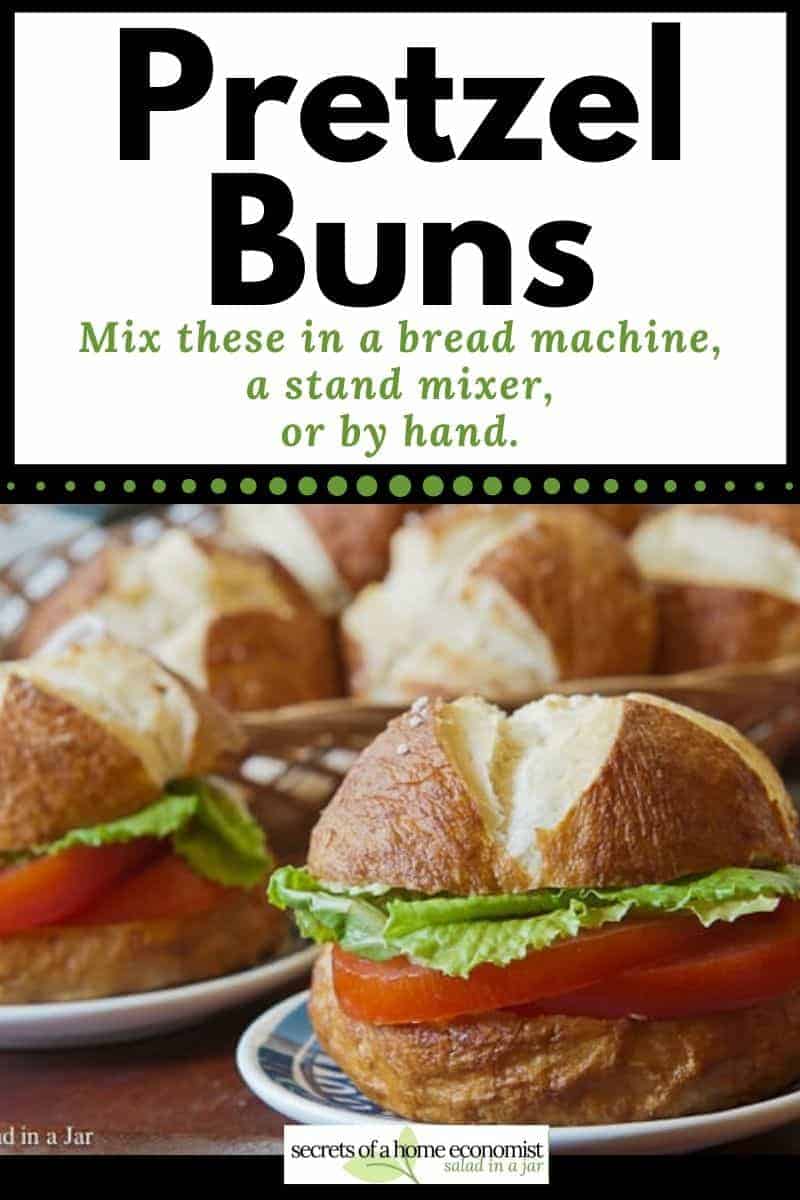
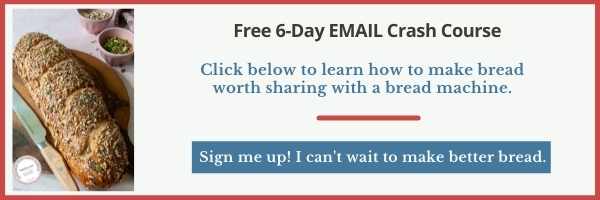

Paula Rhodes, owner
As a retired home economist, I created Saladinajar.com to share my belief that you don’t have to be a chef to find joy in creating homemade food worth sharing. Bread machines (used in an unconventional way), homemade yogurt, and quick microwave recipes are my specialty.